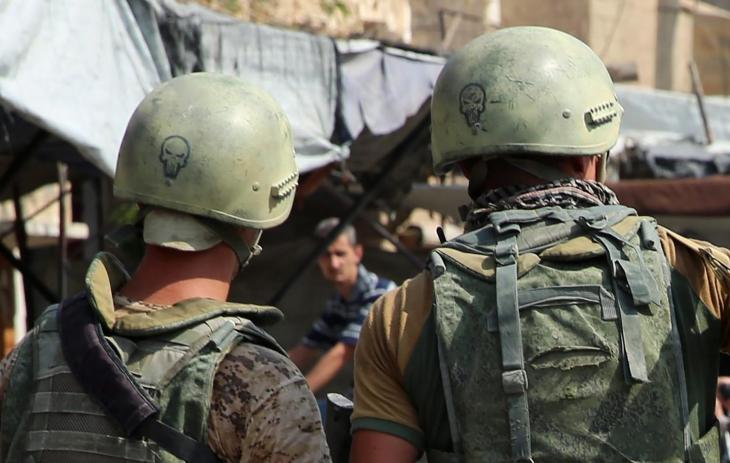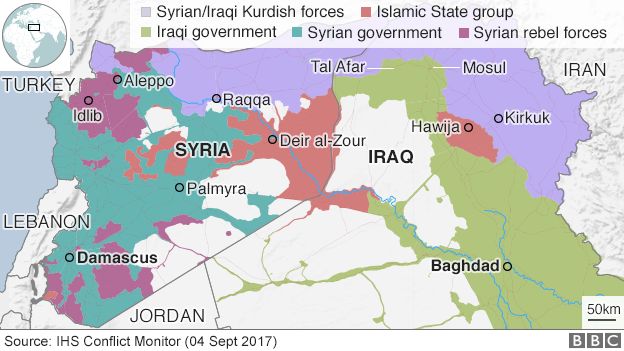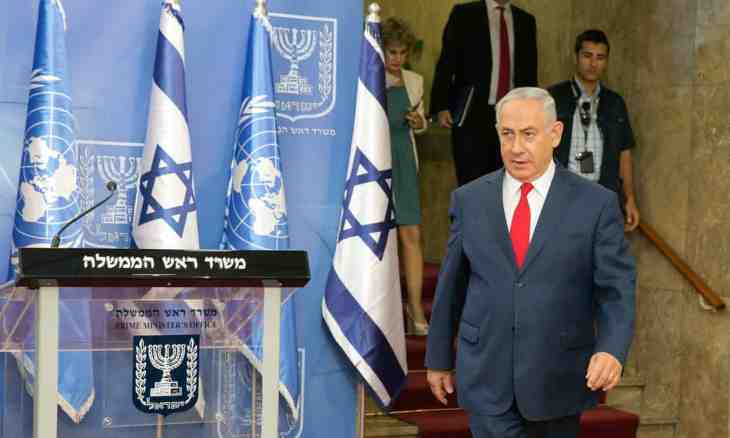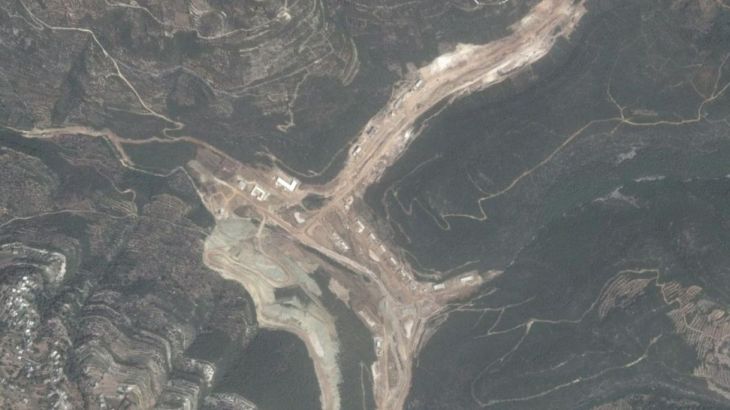
Lt. General Valery Asapov killed by an Islamic State Mortar Attack. Photo Credit: Daily Mail
25SEPT2017 – Situation:
Over the last 24 hours, the proxy war between the US and Russia in Syria has reached new heights. Yesterday, 24SEPT2017, Russia’s Defense Ministry announced that one of its top military advisors in Syria had been killed as a result of an apparent Islamic State (IS) mortar attack.[i] Lt. General Valery Asapov “was at a command post of Syrian troops, assisting the Syrian commanders in the operation for the liberation of the city of Deir Ez-Zor” when he was fatally wounded from shrapnel according to Russian state news agency Tass.[ii]

Russian Special Forces Operating . Photo Credit:
However, in the eyes of Moscow, the death of Asapov had little to do with IS, and more to do with US policy. According to Russian Deputy Foreign Minister Sergey Ryaback, “The death of the Russian commander is the price paid with blood for the hypocrisy of American policy in Syria.”[iii] Ryaback’s statement is based off concerns in Moscow that despite claims from Washington in favor of fighting IS, no action has been taken on ground.[iv] “The American side declares that it is interested in the elimination of IS … but some of its actions show it is doing the opposite and that some political and geopolitical goals are more important for Washington” Ryabkov said.[v] Russian officials have also cited a series of satellite imagery allegedly depicting US special forces located north of Deir Ez-Zor, facing very little militant resistance.[vi] Despite these allegations, US-led coalition forces have continued bombing IS positions throughout Syria in support of the Syrian Democratic Forces’ (SDF) operations against IS. A statement released by Combined Joint Task Force-Operation Inherent Resolve emphasized that “The allegations (by Russia) are false. For operational security, we do not comment on ongoing operations or the current positions of Coalition personnel and our partner forces.”[ix][vii] Yet, Moscow still maintains the premise that US policy is “two-faced”; and as a result, the Islamic State remains strong.[viii]
It is important to note:
A high-level communication channel exists between US/Russia forces in Syria.[x] This channel serves to mitigate any potential increase in tensions amid the two global hegemons, which, as demonstrated, still remains strained.[xi]
Sources:
[i] http://www.newsweek.com/russia-blames-us-hypocrisy-isis-murder-top-moscow-general-syria-670448
[ii] Ibid
[iii] https://www.rt.com/news/404510-syria-russia-general-usa/
[iv] Ibid
[v] http://www.reuters.com/article/us-mideast-crisis-syria-russia-casualtie/moscow-blames-two-faced-u-s-policy-for-russian-generals-syria-death-ria-idUSKCN1C01W6?il=0
[vi] https://www.rt.com/news/404510-syria-russia-general-usa/
[vii] http://www.newsweek.com/russia-blames-us-hypocrisy-isis-murder-top-moscow-general-syria-670448
[viii] Ibid
[ix] https://www.rt.com/news/404510-syria-russia-general-usa/
[x] http://www.politico.com/story/2017/09/21/united-states-russia-syria-communication-lines-242979
[xi] https://www.washingtonpost.com/world/middle_east/us-allies-accuse-russia-of-strikes-in-eastern-syria/2017/09/25/6bcbbab0-a1ff-11e7-b573-8ec86cdfe1ed_story.html?utm_term=.da45741a5864







